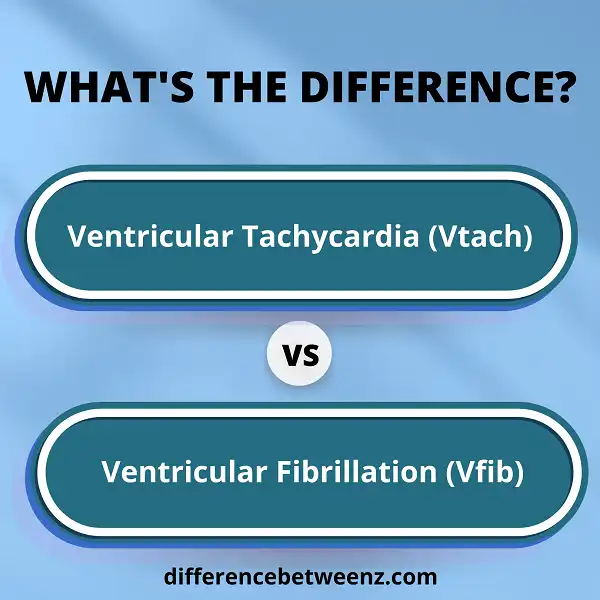When irregular heart rhythms occur, it is important to understand the differences between ventricular tachycardia (Vtach) and ventricular fibrillation. Both can be life-threatening conditions and it is essential for healthcare providers as well as patients to know the signs, symptoms, and consequences associated with each condition so that treatment decisions can be made quickly. In this blog post we will explore both Vtach and Ventricular Fibrillation in terms of their causes, risk factors, treatments available, how they vary from one another and why accurate knowledge of both types of arrhythmias is vital for proper care.
What is Ventricular Tachycardia (Vtach)?
Ventricular Tachycardia (Vtach) is a type of cardiac arrhythmia, or irregular heartbeat. It occurs when the heart’s ventricles beat too quickly, usually faster than 100 beats per minute. This can reduce the amount of blood that is being pumped to the body and thereby decrease oxygen to essential organs. Vtach can be very serious as it may cause sudden cardiac arrest, which can be fatal if not treated right away. Common symptoms include fainting, dizziness, chest pain or pressure, shortness of breath, and palpitations or skipped heartbeats. Prompt diagnosis and treatment are key in controlling this condition as it has been known to be fatal in some cases when not managed properly.
What is Ventricular Fibrillation (Vfib)?
Ventricular Fibrillation (Vfib) is an extremely serious medical condition in which the heart’s ventricles quiver rapidly instead of pumping blood to the body. This means that oxygen-depleted blood cannot circulate to vital organs, resulting in unconsciousness and potential cardiac arrest if assistance isn’t given promptly. Vfib can be brought on by almost any episode that interrupts the electrical signals controlling heart rhythm, including sudden physical trauma, changes in electrolyte balance, infection, or certain types of medication. Although much research has been done on Vfib and further technological strides have been made in treatments, such as advanced defibrillators, it is still a condition that deserves much more attention from the medical community.
Difference between Ventricular Tachycardia (Vtach) and Ventricular Fibrillation (Vfib)
Ventricular Tachycardia (Vtach) and Ventricular Fibrillation (Vfib) are both cardiac arrhythmias that can occur in the heart, but they differ in many ways. At a base level, Ventricular Tachycardia is a rapid firing of electrical signals from the ventricles which results in an irregular heartbeat.
- Ventricular Fibrillation on the other hand occurs when the ventricle’s electrical activity becomes chaotic, resulting in ineffective contractions to pump blood. This can sometimes lead to sudden cardiac arrest if not quickly treated.
- While Ventricular Tachycardia can be triggered by various medical conditions, Ventricular Fibrillation is often caused by a disruption of electricity like electric shock or sometimes as a result of Ventricular Tachycardia itself.
- Generally speaking Venticular Tachycardia can result in Ventricular Fibrillation which carries far more serious consequences than Ventricular Tachycardia alone. Therefore, it is important to monitor both types closely and ensure proper medical attention should either begin to occur.
Conclusion
Ventricular tachycardia and ventricular fibrillation are two dangerous heart arrhythmias. It is important to be able to recognize the difference between the two in order to provide timely treatment. Knowing the signs and symptoms of each can help save a life.


